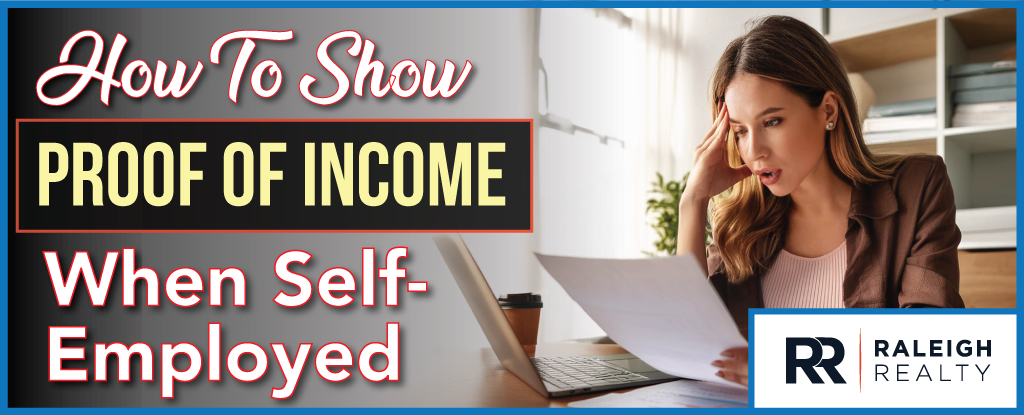How to Show Proof of Income When Self-Employed
Are you self-employed and want to learn more about how to show proof of income? Here are the best ways to show proof of income if you are self-employed.
Finding a good job is stressful yet exciting and many prefer to become self-employed. Whether you are self-employed for independence, wealth, satisfaction, or flexibility, proof of income is still vital. Proof of income is essential to obtain loans, rentals, and several other financial transactions.
If you're self-employed, you're part of a growing segment of the workforce, but you may have discovered that proving your income for a mortgage isn't as straightforward as it is for traditional W-2 employees.
Typically, traditional employees obtain proof of income through pay stubs or an income letter from their employers. It is a bit more tricky for self-employed people. However, it is not quite as confusing as you might think.
If you or anyone you know is considering becoming self-employed, it is essential that you learn how to show proof of income. With the right preparation and documentation, self-employed buyers can successfully navigate the mortgage process and secure their dream home in Raleigh.
Keep reading to learn how to show proof of income for self-employed people.
1. What is Proof of Income?
Proof of income is the documentation or evidence used to show how much money a person earns within a certain period. It is used for several reasons, such as verification of financial stability, the ability to repay loans, fulfill financial obligations, or obtain government assistance. Depending on your employment status, your proof of income may come in several different forms.
If you are buying a home and need a loan, you'll definitely need proof of income, as lenders want to guarantee you will be able to repay the loan. Essentially, it's how you demonstrate that you have sufficient, reliable income to make your monthly mortgage payments.
Lenders use this information to calculate your debt-to-income ratio, assess your financial stability, and determine how much they're willing to lend you. This is why saving money before buying a home is essential.
For traditional W-2 employees, proof of income typically includes recent pay stubs, W-2 forms, and employment verification letters. These documents clearly show consistent monthly income that lenders can easily evaluate.
For self-employed people, you can use various forms as evidence. The process can seem complex, but it is pretty straightforward. All proofs are viable, but some always check which kind of proof is needed for your specific purpose. Banks, for example, usually favor tax documents or payslips from a specific period.
There are several types of proof of income, including tax returns, bank statements, court-ordered payments, social security benefits, W-2 or 1099-MISC forms, and a proof of income letter. Your proof of income should include your full name, the date, and other identifying information. This could be your social security number or ID number.
You might have different types of income. There is earned income, which could be from a job like tips or salaries, and unearned income, unemployment benefits, and pensions. Whichever type of proof of income you must show, double-check that all the information is accurate and up-to-date.
2. 1099 Form
A 1099 form is best for accurate reports of income for the IRS. As self-employed, you'll get these forms from clients or businesses that pay for your services. Typically, these are only used for self-employed people, investors, contractors, and rental income. There are several different types of 1099 forms, so be certain the one you are using is the correct one.
If you receive 1099s from clients, these provide third-party verification of your income. Additionally, long-term contracts or retainer agreements can demonstrate future income stability, which is particularly valuable for lenders.
This form is one of the best forms to use as proof of income as it serves as an official document for income. Self-employed people will most likely receive a Form 1099-NEC (non-employee compensation) or Form 1099-MISC, which is used if you have several different income sources.
This form is accepted by many institutions, saving you time and stress. Most landlords, lenders, and government institutions will accept a 1099 form as proof of income. In addition, it'll help you find any discrepancies in your reported income, which is necessary when dealing with the IRS.
In some cases, not all of your earned income will be reported on your 1099 form, so bring any additional documentation or records of that extra income. This complete record of income is advantageous for providing you with proof of income and financial status.
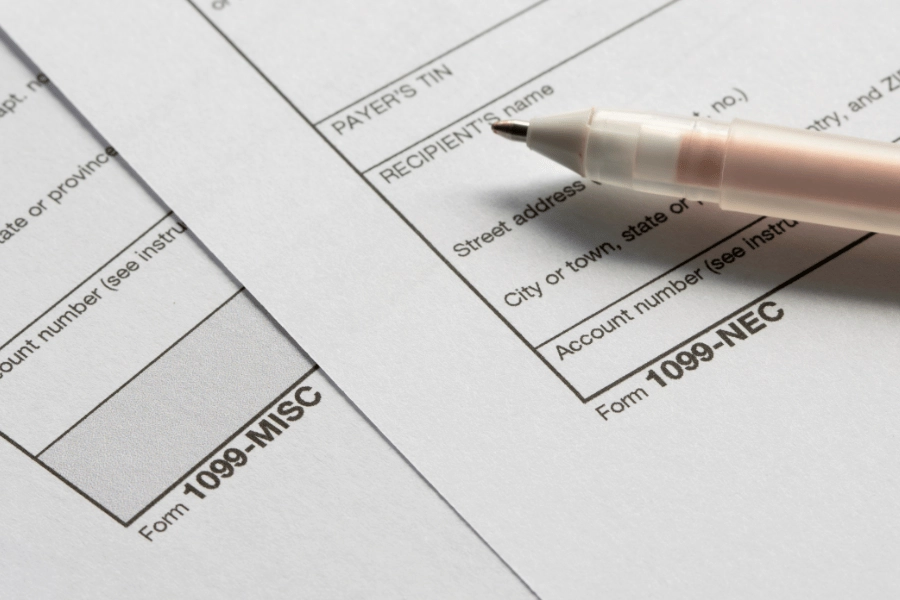
3. Profit and Loss Statements for Mortgage Applications
A profit and loss statement, also called an income statement, is a financial document that summarizes your business revenues, costs, and expenses during a specific period. It shows whether your business made a profit or loss during that timeframe and provides lenders with a current snapshot of your business performance.
These are essential for business owners and stakeholders to view the company's financial well-being. In other words, they are used to see a company's strengths and weaknesses. You would use them to make business decisions, plan financial investments, and assess the company overall.
Profit and loss statements are great to use when seeking loans and either own the business or are self-employed. These statements are not usually used as proof of income by people who hold traditional jobs and are not self-employed. However, freelancers do use these statements on occasion. You can either reach out to an accountant or use software to document the information yourself.
For self-employed mortgage applicants, the profit and loss statement bridges the gap between your most recent tax returns (which may be 6-18 months old) and your current financial situation. This is crucial because lenders want to see that your business continues to perform well and generate consistent income.
Key Components of a Profit and Loss Statement
Revenue/Income Section: This includes all money coming into your business from sales, services, or other business activities. Be sure to separate different income streams if you have multiple revenue sources.
Cost of Goods Sold (COGS): Direct costs associated with producing your goods or services, such as materials, direct labor, or subcontractor fees.
Gross Profit: Your revenue minus COGS, showing how much money you make before operating expenses.
Operating Expenses: Regular business expenses like rent, utilities, marketing, insurance, and professional fees. These should align with the expenses shown on your tax returns.
Net Income: Your bottom line after all expenses are deducted from revenue. This is the number lenders focus on most heavily.
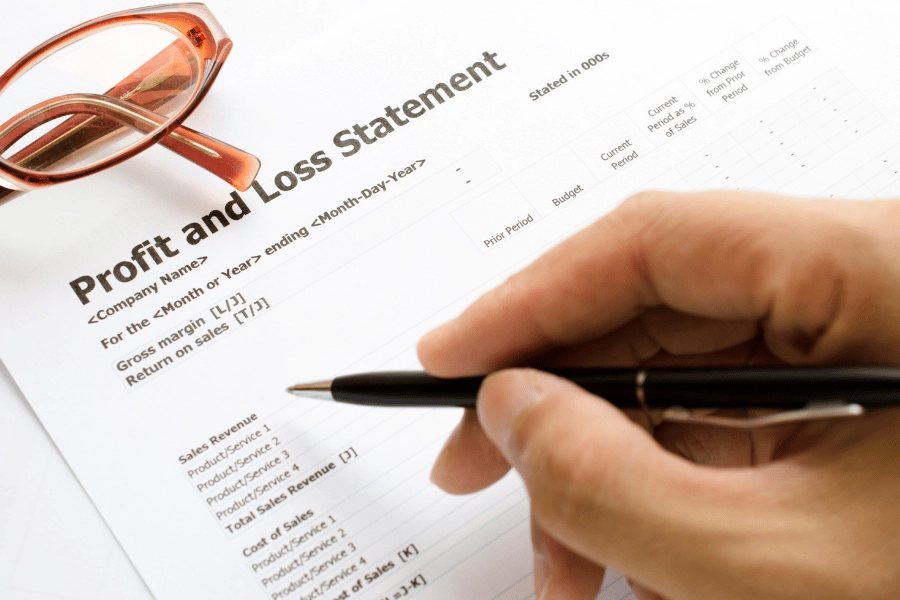
4. Tax Returns
Your federal tax returns are the cornerstone of income verification for self-employed borrowers. Many self-employed people use copies of Federal tax returns from the previous year as proof of income. Usually, these are from the last two or three years.
Tax returns depict your income, expenses, deductions, and tax liabilities for a certain period. Typically, your employer will provide these annually.
Most lenders will require:
Two Years of Complete Tax Returns: Include all schedules, especially Schedule C (Profit or Loss from Business) or Schedule K-1 if you're a partner in a business. Even if you filed extensions, provide copies of what was actually submitted to the IRS.
Signed Tax Returns: Many lenders require tax returns to be signed by both you and your tax preparer. If you prepare your own taxes, your signature alone is sufficient.
Tax Transcripts: Some lenders may request IRS tax transcripts directly from the IRS to verify the authenticity of your returns. You can order these online at IRS.gov or by calling the IRS directly.
As a self-employed person, filing your tax return differs slightly from filing your tax return. The first step is to organize your financial records by gathering them up and including your income statements, invoices, bank statements, expense records, and any other important documents about your business.
Most self-employed people complete Schedule C forms to report income and expenses, and then the net profit or loss is transferred to your 1040 form. Once you have paid your estimated taxes and submitted the return, keep the records, as this is one of the best ways to show proof of income as a self-employed person.
In some cases, as a self-employed person, you aren't required to report income below a specific amount, meaning the tax returns might underestimate your total earnings. If this happens, bring additional documentation of the extra income that wasn't recorded. You can use annotated bank statements along with your tax return.
If you run into any problems, consider help from a tax professional or accountant. Similar to buying a house, it is always easier with realty specialists to help you avoid common mistakes.
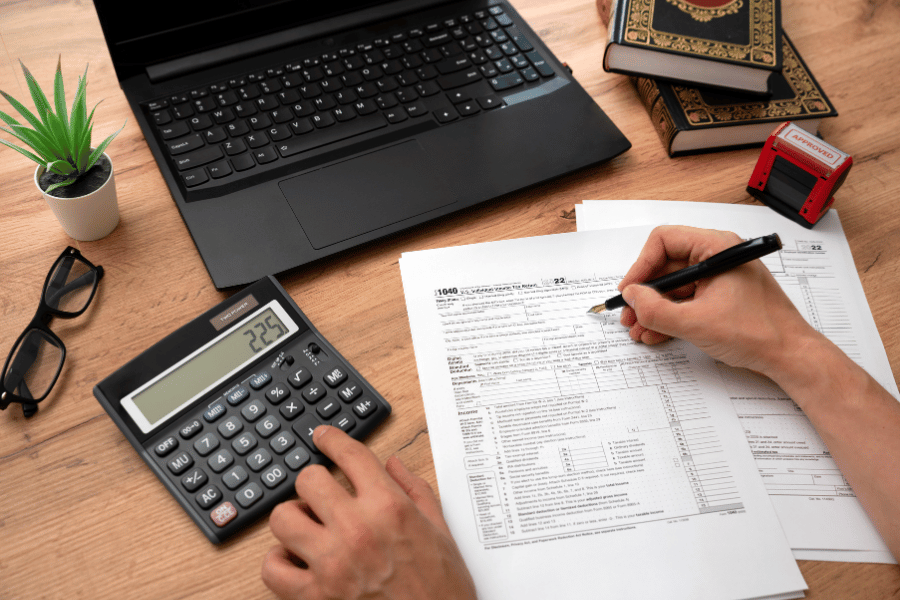
5. Receipts and Sales Records
Receipts and sales records form the foundation of your income documentation. These documents support every number on your tax returns and profit and loss statements, providing the detailed backup that lenders may request.
Organized record keeping also demonstrates professionalism and business competency to lenders, which can positively influence their perception of your loan application.
As a business, you'll need records of payments from clients or customers. These can come in different forms, like electronic payment confirmations or receipts. Keep these transactions recorded as documents.
Online payments from clients or customers can be used as legit proof of income. Just be sure to generate a full report of all payments received. Unlike other proof of income documents, receipts and sales records do not account for cash and check deposit payments. Be sure to supplement these with another proof of income to have a complete record.
Keep all receipts and sales records organized, then create a summary or spreadsheet. This should specify the date of sale, the client's name, the type of transaction, and the product or services you provided.
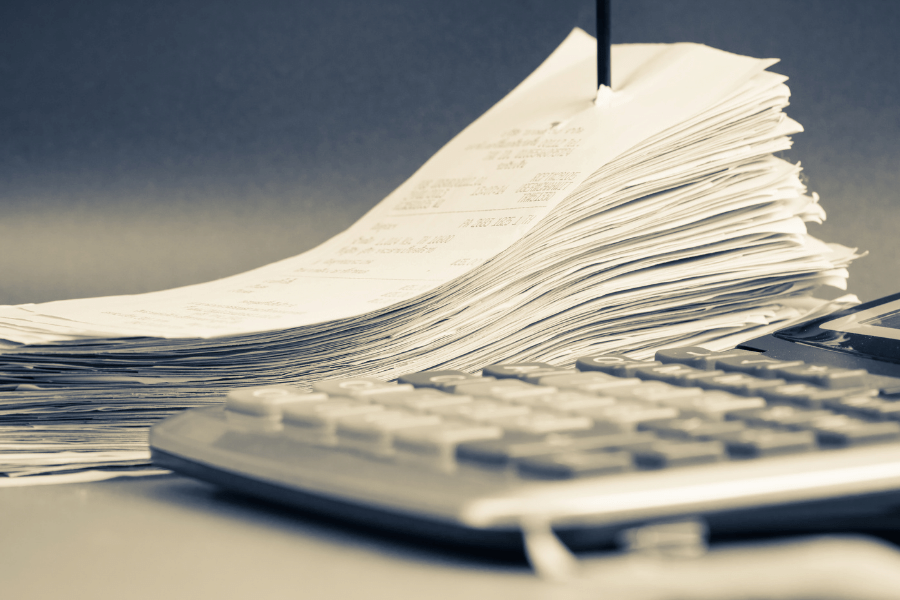
6. Bank Statements
Bank statements provide third-party verification of your actual cash flow, serving as proof that the income you report on tax returns and profit and loss statements is actually being deposited into your accounts. Unlike tax documents that can be prepared in various ways, bank statements show the raw data of money coming in and going out of your business.
For self-employed borrowers, bank statements are particularly valuable because they demonstrate the timing and consistency of income deposits. Lenders can see whether your income is steady throughout the year or highly seasonal, which affects how they evaluate your qualifying income.
Business Bank Statements: Provide 12-24 months of statements showing consistent deposits that align with your reported income. Lenders look for regular deposits and overall account stability.
Personal Bank Statements: These help verify that you're transferring business profits to personal accounts and maintaining adequate reserves.
Separation is Key: Keep business and personal finances clearly separated. Mixed-use accounts can create complications and questions during underwriting.

7. Industry Specific Considerations
Real Estate Agents and Brokers
If you're in real estate, lenders understand the cyclical nature of commission income. Provide:
- Two years of complete tax returns showing real estate income
- Year-to-date commission statements
- A list of pending transactions that may close soon
Contractors and Freelancers
For project-based work:
- Document multiple income sources to show diversification
- Provide contracts for ongoing or future work
- Keep detailed records of business expenses to maximize your net income
Rental Property Owners
Rental income has special considerations:
- Provide lease agreements for all properties
- Show rental income history from tax returns
- Document property management expenses clearly
- Be prepared for lenders to apply a vacancy factor (typically 25%) to your rental income

Methodology
Data was sourced from TurboTax and Investopedia to determine the best ways to show proof of income as a self-employed person.
FAQs
How do you get pay stubs if you are self-employed?
Self-employed people create pay stubs through pay stub generators. You can work with professionals or manually input the information using software programs. There are several free pay stub generators available online.
What is an income statement for self-employed?
An income statement for self-employed people still summarizes income and expenses for a certain period. You can list all revenues at the top and all the expenses after.
Can I use bank statements as proof of income?
Bank statements are commonly used for income verification for self-employed people and retirees.
What is proof of income?
Proof of income is documentation of how much you have earned over a specific period. Usually, you'll be asked for this to prove you have a steady source of income through bank statements, pay stubs, tax returns, and other legal documents.
What is proof of income for a loan?
Typically, to obtain a loan, lenders require proof of income and identity to approve you for a loan. This shows that you will be finally able to repay the loan. The documents you'll be asked to provide include copies of your state or government-issued ID, paystubs, tax returns, or bank statements.
Proof of Income For Self-Employed People - Final Thoughts
The Raleigh-Durham market is competitive, but self-employed buyers who come prepared with solid documentation can compete effectively with traditional W-2 employees. The key is starting your preparation early and working with professionals who understand both the local market and the unique challenges of self-employed borrowers.
At Raleigh Realty, we work with self-employed clients regularly and understand the additional steps needed to ensure a smooth transaction. We can connect you with mortgage professionals who specialize in self-employed borrowers and help you navigate the competitive Triangle market.
Raleigh is one of the fastest-growing areas in the country and has many beautiful homes for sale if you are moving to the area. You will have to act fast if you want to buy your dream home in one of Raleigh's best neighborhoods.
Are you ready to start your home buying journey in Raleigh. Contact the experts at Raleigh Realty today to find your perfect home.
